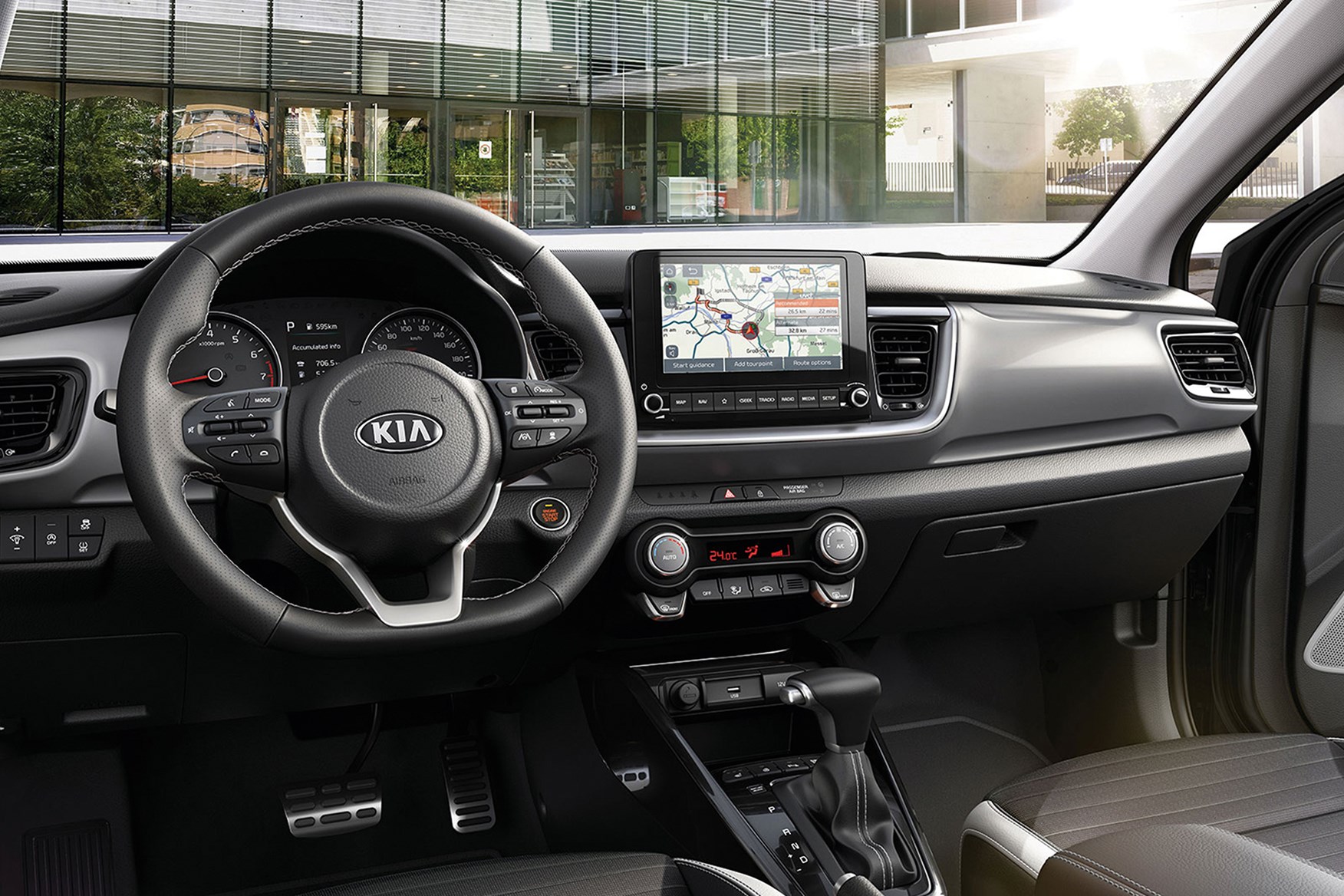What are the Best Four-Wheel-Drive SUVs of 2021? ⭐Use our ranking system to find the safest or most reliable 4WD SUVs on the market and discover the top model by price, exterior design. The Cretaceous period ended about 65 million years ago. However, the Sequoia has found itself at the bottom of the rankings heap. While the large SUV saw a modest increase in. New Car and Driver SUV rankings. Jump to Latest Follow 1 - 5 of 5 Posts. SunFun Registered. 2021 X5 xDrive 45e Joined Apr 23, 2017 151 Posts.
Front-wheel drive is standard on most trims, and four-wheel drive can be added for $1500, even on base models. For Latitude, Freedom, Latitude Plus, and Altitude trims, a 180-hp inline-four is. View the top-ranked 2021 Luxury Subcompact SUVs at U.S. See how the 2021 Audi Q3, 2021 BMW X1 & 2021 Volvo XC40 compare with the rest.
Search vehicle safety ratings.
NHTSA's 5-Star Safety Ratings help consumers make smart decisions about safety
when purchasing a vehicle. You can also search ratings by manufacturer.
Check your car seat's Ease of Use Ratings.

NHTSA’s Ease of Use Ratings let you compare how easy it is to use certain car seat features so you can make an informed decision about the right car seat.
Go to Car SeatsCheck your tires.
Uniform Tire Quality Grading Systems (UTQGS) ratings allow
consumers to compare tire features.
Buying a new car?
Purchase a vehicle with safety in mind. Use NHTSA's Vehicle Comparison Tool to see 5-Star Safety Ratings and recall information at a glance.
Timeline of NHTSA's5-Star Safety Ratings program
Ratings standards and crash safety have advanced
1970Car And Driver Suv Rankings 2020
The Highway Safety Act established NHTSA and outlined its mission to reduce deaths, injuries and economic losses resulting from motor vehicle crashes.
1978Began testing and rating vehicles for frontal impact protection using data from crash test dummies.
Car And Driver Suv Rankings 2021
1993Began using the 5-Star Safety Ratings system to help consumers make informed safety choices when buying new vehicles.
1996Began testing and rating vehicles for side crash protection.
2000Began testing vehicles for resistance to rollover crashes, which are more dangerous than other types of crashes.
2003Rollover tests are updated to better simulate real-world rollover crashes.
2004Launched SaferCar.gov (now NHTSA.gov) so consumers can search for 5-Star Safety Ratings and find other important highway safety information in one place.
2006Required that window labels on new vehicles include 5-Star Safety Ratings information.
2010Enhanced 5-Star Safety Ratings to include an Overall Vehicle Score and a listing of advanced recommended safety technologies.
2013Added rearview video systems to the list of recommended technologies to help prevent backover incidents. This feature will be standard in all vehicles by 2018.
2015Announced plans to update its 5-Star Safety Ratings program and encourage automakers to produce cars with better crash protection and new crash avoidance technologies to save more lives and reduce passenger and pedestrian injuries.
2016Added automatic emergency braking systems to the list of recommended technologies to help prevent or reduce the impact speed of rear-end crashes starting with model year 2018 vehicles. Automakers committed to making it standard in all vehicles by 2022.
Keeping safety in mind during the buying process
Download this brochure to get more information about NHTSA's 5-star safety program and our testing and rating milestones.

The 5-Star Safety Ratings program evaluates how vehicles perform in crash tests. NHTSA conducts frontal, side and rollover tests because these types account for the majority of crashes on America's roadways.
Frontal Crash Test Scenario:
You are heading south on a two-lane road, while another vehicle is driving north on that street.The driver in the other vehicle starts to fall asleep at the wheel and veers into your lane. Suddenly, you collide head-on with the northbound vehicle.
Test Details- An average-size adult male in driver seat
- A small-size adult female in front passenger seat
- All dummies are secured with a seat belt
- Represents crashes between two similar vehicles with same weight
- A vehicle crashes into a fixed barrier at 35 mph
- Evaluation of injury to the head, neck, chest, and femur (leg)
- Frontal crash ratings must only be compared betwee0003n vehicles from the same weight class (+/– 250lbs)
You pull up to a four-way intersection and make a complete stop, look to your left and right and begin to accelerate into the intersection. Another vehicle approaches the same intersection, but doesn’t yield at the stop sign and hits your vehicle on the driver’s side.
Test Details- An average-size adult male in driver seat
- A small-size adult female in rear passenger seat (driver’s side)
- All dummies are secured with a seat belt
- Represents an intersection type collision
- A 3,015 lb moving barrier crashes at 38.5 mph into a standing vehicle
- Evaluation of injury to the head, chest, abdomen, and pelvis
- For side barrier ratings, it is possible to compare all vehicles with each other
On a rainy afternoon, you’re driving down a curved street in your neighborhood. All of a sudden, you lose control of the vehicle. You start sliding on the road sideways and crash into a telephone pole on the driver’s side.
Test Details- A small-size adult female in driver seat
- The dummy is secured with a seat belt
- Vehicle, angled at 75 degrees, is pulled sideways at 20 mph into a 25cm diameter pole at the driver’s seating location
- Evaluation of injury to the head, chest, lower spine, abdomen, pelvis
- For side pole ratings, it is possible to compare all vehicles with each other
You’re driving your SUV on a 55 mph highway and suddenly you come upon a sharp curve. You try to navigate the curve, but you’re traveling too fast and losing control of your vehicle, and your vehicle departs the road and rolls over.
Static Stability FactorThe rollover resistance rating is based on an at-rest laboratory measurement known as the Static Stability Factor (SSF) that determines how “top-heavy” a vehicle is, and the results of a driving maneuver that tests whether a vehicle is vulnerable to tipping up on the road in a severe maneuver.
Look for vehicles with these driver assistance technologies. These features have met NHTSA performance tests.
Learn about driver assistance technologiesOther safety equipment provides protection and reliability on the road. When purchasing a vehicle, check for these features.
The National Highway Traffic Safety Administration’s New Car Assessment Program (NCAP) created the 5-Star Safety Ratings Program to provide consumers with information about the crash protection and rollover safety of new vehicles beyond what is required by Federal law. One star is the lowest rating; five stars is the highest. More stars equal safer cars.
Here is the list of model year 2021 vehicle models selected for crash testing under NHTSA's 5-Star Safety Ratings Program.
Yes, other organizations test crash vehicles, but NHTSA is the only organization that rates rollover resistance, in addition to frontal and side crashworthiness.
Yes, some vehicle star ratings that were rated higher under the older Safety Ratings system may be lower under the new 5-Star Safety Ratings system. However, it does not mean that your current 4- or 5-star vehicle is unsafe. Due to more vigorous testing, a vehicle that once received 5 stars under the old system, may receive a lower score under the new system, even if no changes have been made to the model.
NHTSA’s 5-Star Ratings Program has a limited budget and must concentrate its ratings on front and side-impact crashes that are responsible for the highest percentage of deaths and serious injuries.
NHTSA categorizes vehicles by class and “curb” weight. Curb weight is the weight of a vehicle with standard equipment including the maximum capacity of fuel, oil, coolant, and air conditioning. Passenger cars are further subdivided.
- Passenger cars mini (PC/Mi) (1,500–1,999 lbs.)
- Passenger cars light (PC/L) (2,000–2,499 lbs.)
- Passenger cars compact (PC/C) (2,500–2,999 lbs.)
- Passenger cars medium (PC/Me) (3,000–3,499 lbs.)
- Passenger cars heavy (PC/H) (3,500 lbs. and over )
- Sport utility vehicles (SUV)
- Pickup trucks (PU) Vans (VAN)
Side crash rating results can be compared across all classes because all vehicles are hit with the same force by the same moving barrier or pole.
Rollover ratings can also be compared across all classes. Frontal crash rating results can only be compared to other vehicles in the same class and whose weight is plus or minus 250 pounds of the vehicle being rated. This is because a frontal crash rating into a fixed barrier represents a crash between two vehicles of the same weight.
This symbol alerts consumers to a safety concern the government has about the vehicle. That concern can include: structural failure or some type of unintended performance of a vehicle component such as a fuel leakage or a door opening. Please note that safety concerns are NOT part of the calculation for an Overall Vehicle Score. A vehicle can have a high star rating, but still have a safety concern. However, if a safety concern is identified, the symbol will appear in the correct crash category and Overall Vehicle Score area.
For more than 50 years, the National Highway Traffic Safety Administration has been working to keep people safe on the road. Learn more about what we do and how we enable everyone to live safer.
Go to YouTube ChannelSmall SUVs
Small SUVs
12021 Ford Bronco Sport 22021 Hyundai Kona Electric 32021 Kia Sportage See Full Rankings »Luxury Small SUVs
12021 Lincoln Corsair 22021 Volvo XC40 32021 Mercedes-Benz GLA Class See Full Rankings »Mid-Size SUVs
Mid-Size SUVs
12021 Ford Mustang Mach-E 22021 Toyota Venza 32021 Hyundai Santa Fe See Full Rankings »Luxury Mid-Size SUVs
12021 Jaguar I-Pace 22021 Genesis GV80 32021 Volvo XC60 See Full Rankings »Large SUVs
Large SUVs
12021 Kia Telluride 22021 Hyundai Palisade 32021 Toyota Highlander See Full Rankings »Luxury Large SUVs
12021 Audi E-Tron 22021 Land Rover Range Rover Sport 32021 Lincoln Navigator See Full Rankings »Crossover SUVs
Crossover SUVs
12021 Ford Mustang Mach-E 22021 Kia Telluride 32021 Hyundai Palisade See Full Rankings »Luxury Crossover SUVs
12021 Jaguar I-Pace 22021 Audi E-Tron 32021 Genesis GV80 See Full Rankings »Car And Driver Luxury Suv Rankings
Latest Car News
More Car News »